For a long time I dreamt about travelling around Asia. I wanted my trip to be over an extended period, to give me the chance to really enjoy the culture, history and beautiful nature of each individual country. In order to travel for so long I needed to save for a few years, and also plan my itinerary and total budget. In this post I will share with you how to travel on a budget in Asia, by showing you my own budget and spendings and also my top tips for saving money.
Itinerary
We already knew which countries we wanted to visit, we just needed to work out the exact journey. We wanted to ensure we would go to each country at the best possible time and also follow a path that made the most sense both economically and geographically.
The best time to visit most countries in South East Asia is over winter in the Northern Hemisphere, when it’s dry and not too hot. However some countries do differ slightly, for example the best time to visit Vietnam is February to April or August to October, whereas Indonesia is May to September. I researched this using Google.
In November my partner and I set off on a trip of a lifetime, travelling to Sri Lanka, Malaysia, Singapore, Thailand, Myanmar, Laos, Cambodia, Vietnam, Japan, Philippines and Indonesia.
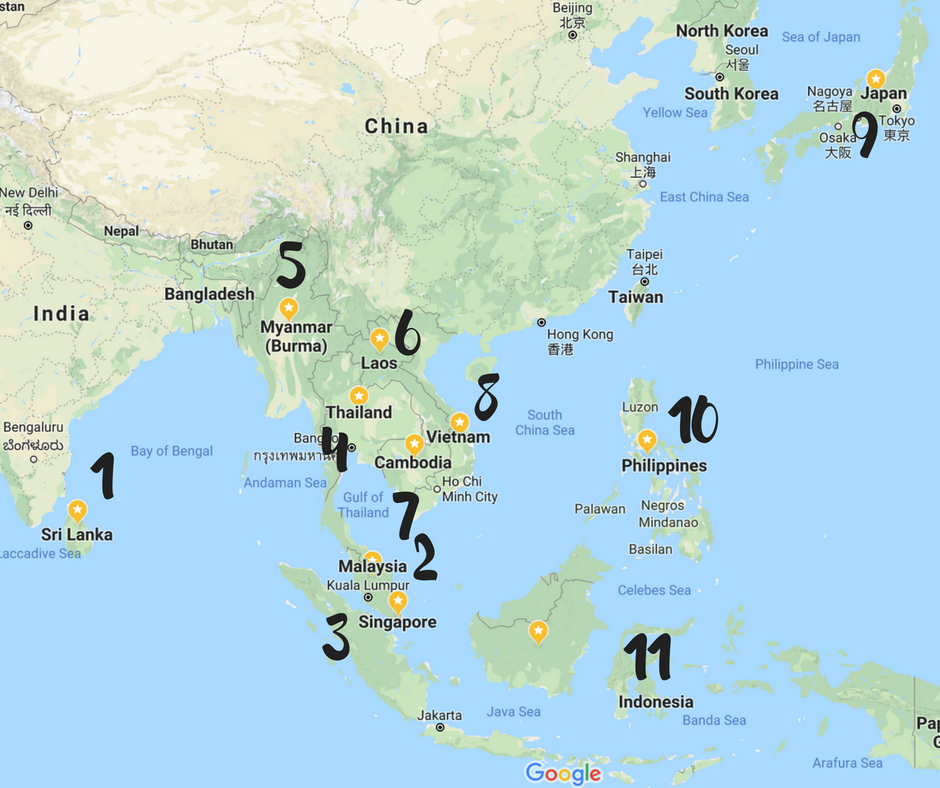
Budget
FLIGHTS
We used Skyscanner to research different flights and find out the best path. This also helped us to work out the travel part of the budget. We didn’t book many flights in advance but as we were flexible on dates it was generally quite affordable. Check out some of my top tips on how to book cheap flights here!
When booking flights within Asia you should also check out Value Alliance. Created by six big budget airlines (Scoot, Cebu Pacific Air, NokAir, NokScoot, Jeju Air and Vanilla Air) it is the best booking platform to find cheap flights around Asia. Their collaboration enables you to find the very best deals!
Over a total of 12 flights we spent $1738 USD each. We had originally ‘over’ budgeted at $1800 USD per person, which was lucky as we ended up missing 1 flight and spending more than we expected. So remember to always have an emergency budget!
DAILY SPENDINGS
Lonely Planet has a useful feature that allows you to see the average daily cost per person for each country (for budget, mid-range and luxury). Just search for the country, then scroll down to ‘(insert country name) in detail’ and click on ‘money and costs’ under planning tools.
My daily budget included accommodation (private double room divided by 2), local travel, food and activities. In general we were able to stick to the budget each day, but occasionally there would be extra expenditures when we didn’t want to miss out on things like Angkor Wat, or hanging out with elephants for the day!
We determined a vague plan on how many days we would stay in each place by writing a basic list on everything we wanted to see and do for each country. From this we were able to work out a rough budget for our travels.
Here is the budget breakdown (per person) for each country (in USD), you can see the original budget per day, the actual average spending per day, the amount of days spent in that country and finally the total cost.
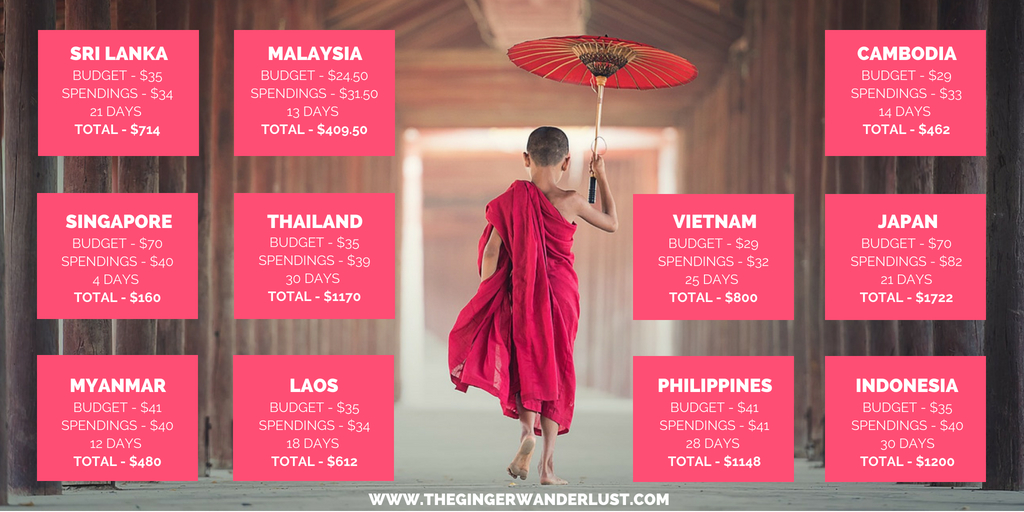
TOTAL SPENDINGS
In total we each spent $12645.50 USD for 7 months travelling over 11 countries. Check out the budget breakdown below.
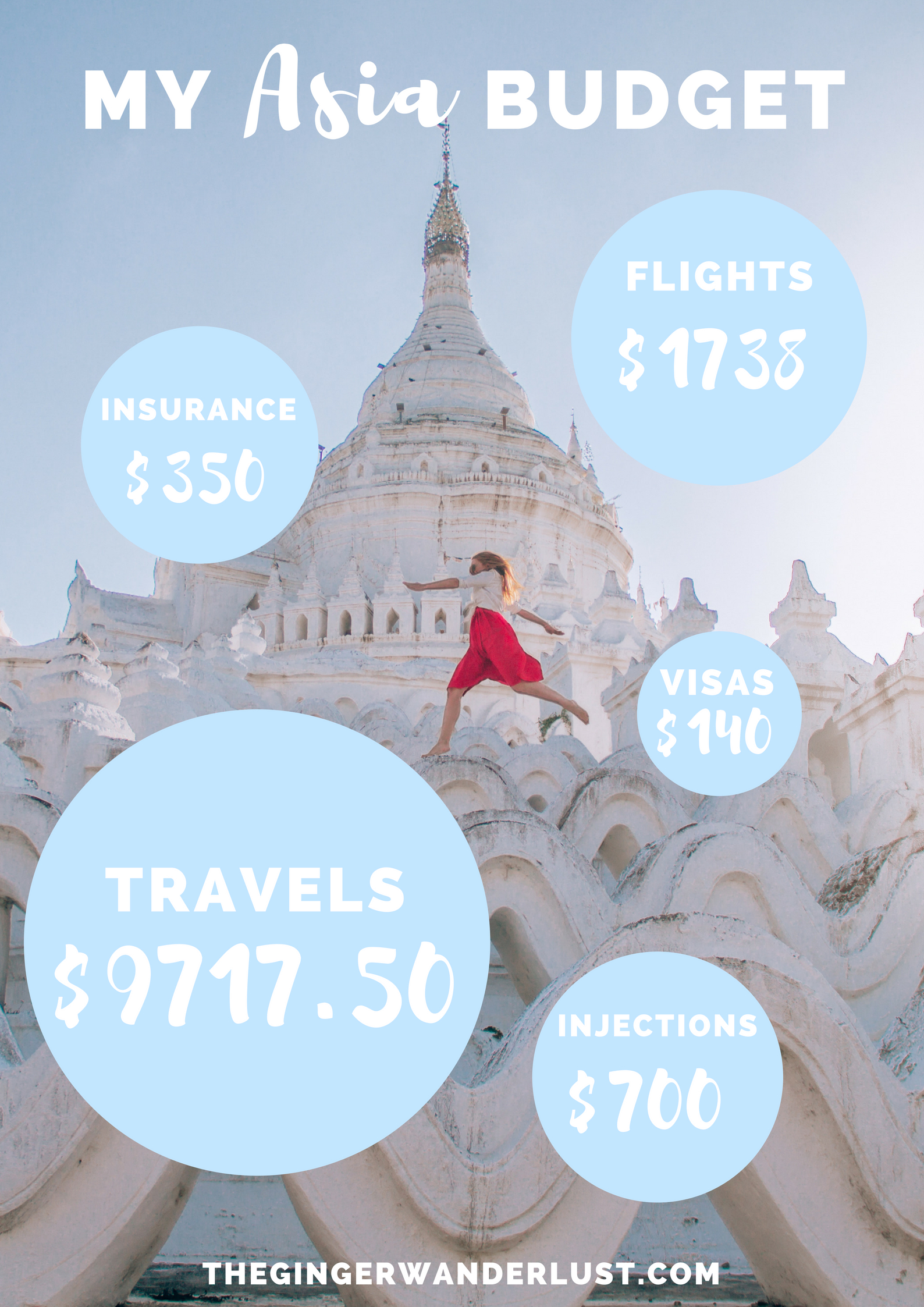
Budget tips
Here are a few of my money saving travel tips:
1) GET A TRAVEL CARD
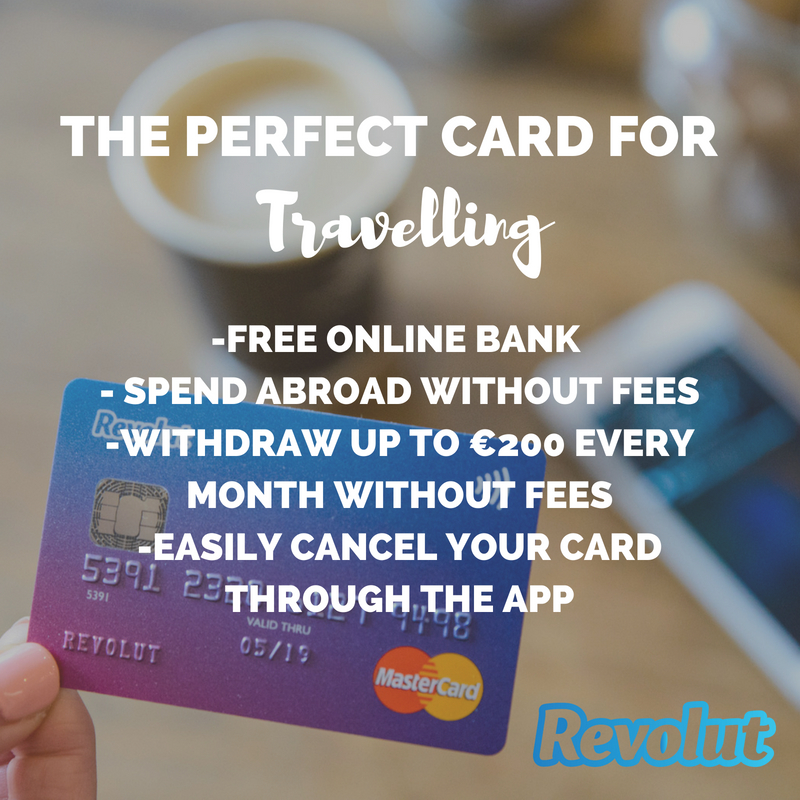 Before leaving to go travelling I signed up for a Revolut card. This is a free online bank, that lets you spend abroad without fees! You can also withdraw up to £200 for free from international ATMs each month!
Before leaving to go travelling I signed up for a Revolut card. This is a free online bank, that lets you spend abroad without fees! You can also withdraw up to £200 for free from international ATMs each month!
This card not only saves you money, but through the app it is super easy to track your spendings and also to freeze or cancel the card. I accidentally left my purse on a bus in Malaysia and temporarily froze my card through the app – I managed to get my purse back (in Singapore!) with everything still there, so I was able to unfreeze my card! It made the whole process super easy and stress-free.
Usually you would have to pay for the delivery of the card, but if you sign up via my link you get everything for FREE!
2) EAT LOCAL FOOD
In most countries in South East Asia, local food will be about 50% cheaper than western food. We ate a lot of vegetable fried rice or noodles to save money. Most of the time these meals worked out at only $1-2 each.
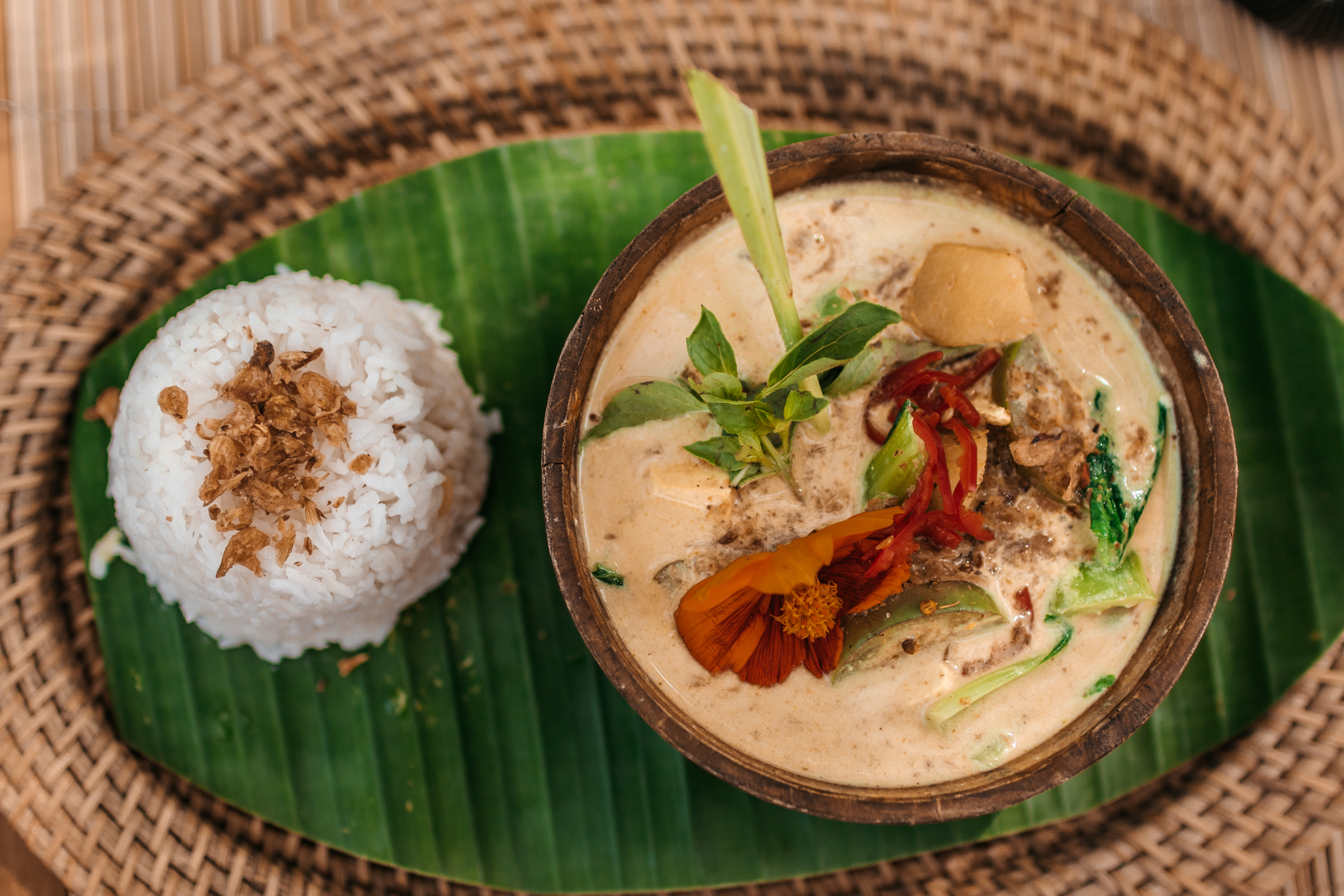
3) DON’T DRINK
Alcohol is expensive! We only drank on about 5 different occasions. Not drinking, was a great way to save money and stay on budget.
4) BOOK CHEAP ACCOMMODATION
We booked basically all of our accommodation through booking.com a day before arriving somewhere. This site shows the cheapest prices available for your dates, and also allows you to filter by lowest price first. You can even search for accommodation using the map, if there is a particular area you want to stay in. Book via my link for a 10% refund on your first stay!
In general we always booked a private double room, sometimes this worked out the same price as 2 beds in a dorm! We also tried to have rooms where breakfast is included as then there’s one less meal to think about!
5) SAVE MONEY ON FLIGHTS
More than 10% of our budget was spent on flights, and it would have been a lot higher if we didn’t know cheeky tips on getting cheap flights!
6) USE LOCAL TRANSPORT
Where possible, take the bus or train, rather than private transport. In Sri Lanka we took local buses, these were only around $2 each time, instead of paying over 25$ a day for a private driver. You will be trading comfort for cost, but for us it was worth it! It was also a great way to meet locals.
If you do need to use a taxi in Asia, then I would recommend downloading the app Grab. The prices are lower than Uber and it saves you from having to haggle (or from getting scammed).
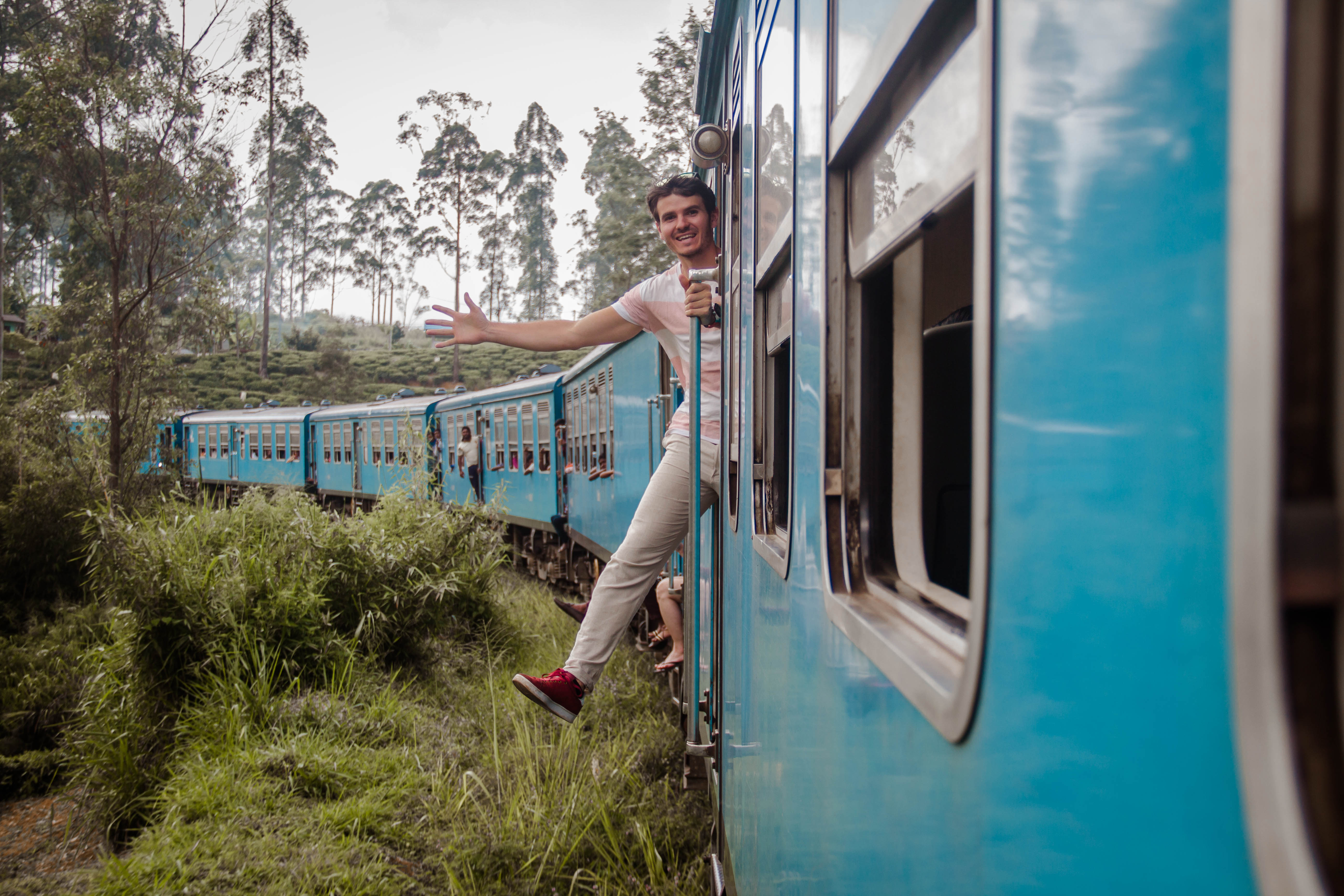
7) WALK!
If you’re able to, walk! It is always the cheapest option. In Ninh Binh (Vietnam) we walked over 12km in one day from the Hang Mua caves to the Ecotourism bird park.
8) HAGGLE
When you ask the cost of something in Asia, it is generally never the final price – remember to haggle! I usually take 40% off their offer and then we bargain until we are both happy with the price.
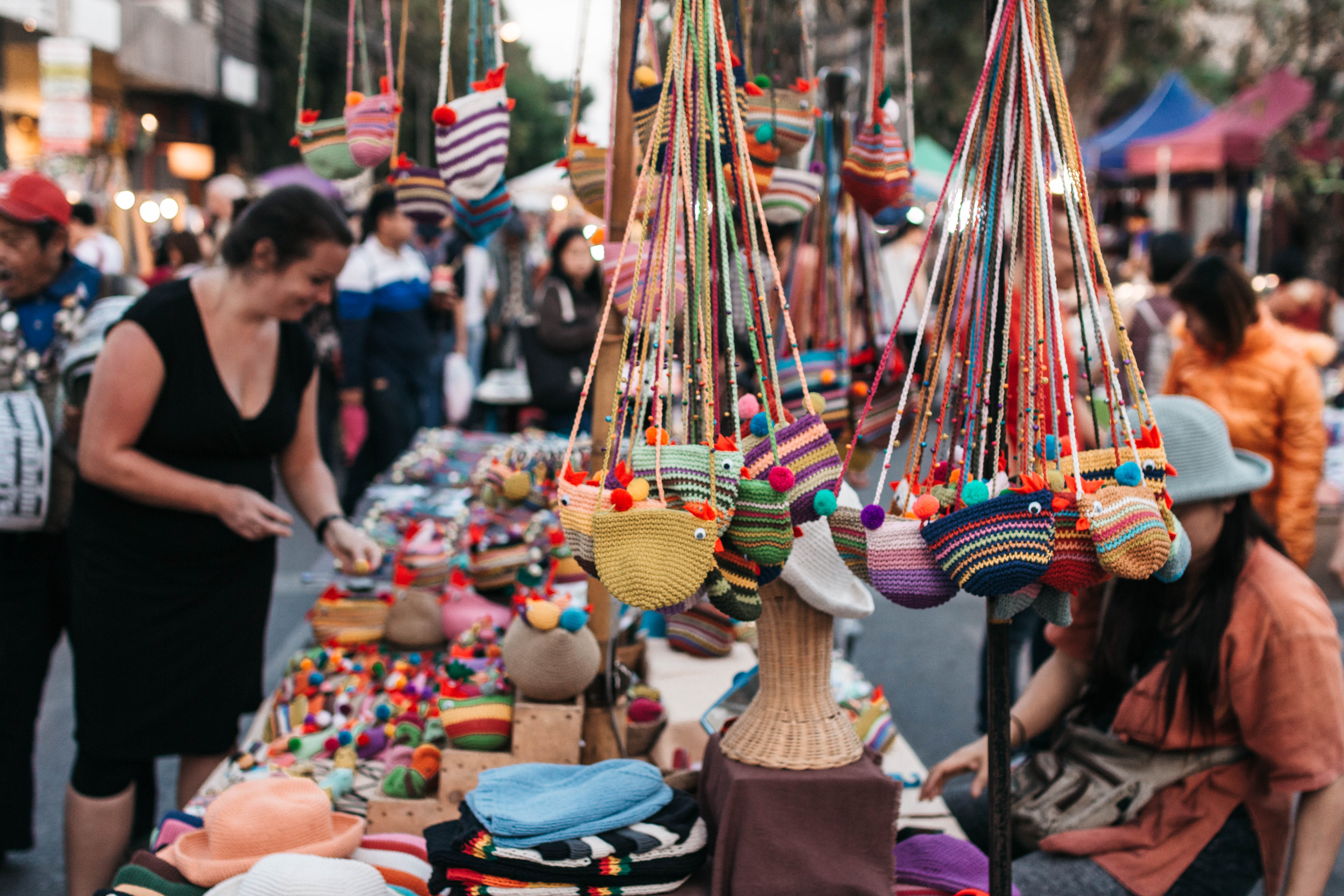
9) BRING DOLLARS TO THAILAND / PAY BY CARD WHEN POSSIBLE
Thanks to my travel card, we were able to easily withdraw money each time when we arrived into a country (without all the international fees). This saved us from carrying around too much cash or any travellers cheques. However for Thailand I would recommend bringing cash to exchange, as well as paying by card when possible. The ATM fees in Thailand where the highest that we experienced, they were at least 5$ per transaction.
10) RESEARCH PRICES IF YOU’RE DOING A TOUR
We generally tried to avoid tours, but sometimes it’s not possible. In Koh Phi Phi we opted for the cheapest option to go to ‘the beach’ (and other sites) for 500 baht (around $15 USD), some tours were around 2000 baht!! We found out about the cheapest option by asking around.
At Honda Bay in the Philippines we saw tours advertised at 1500 pesos per person, whereas if you go straight to the pier you can hire your own boat for 1500 pesos (for up to 4 people) and you then just pay entry to the islands you wish to visit.
In Coron we wanted to hire a private boat but this worked out expensive between two, so we walked around the streets finding others to join us. We managed to befriend three lovely Italians who we shared a private boat with for the day (giving us flexibility on when we left and came back).
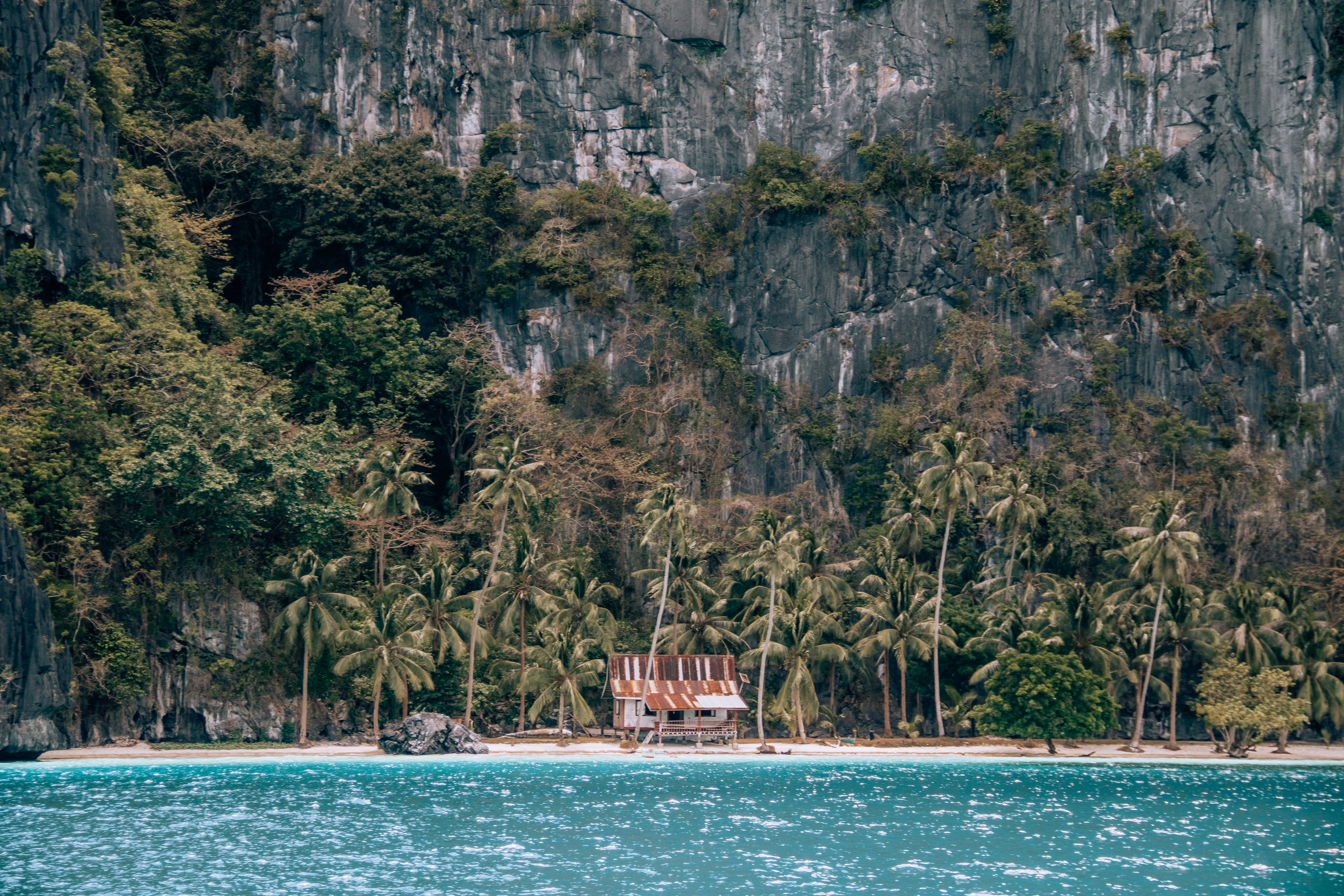
I hope you found this post insightful and informative, and that it will help you in planning and budgeting your own trip! Asia is a great continent to travel around if you’re on a tight budget.
Like this post? Pin it to save for later!
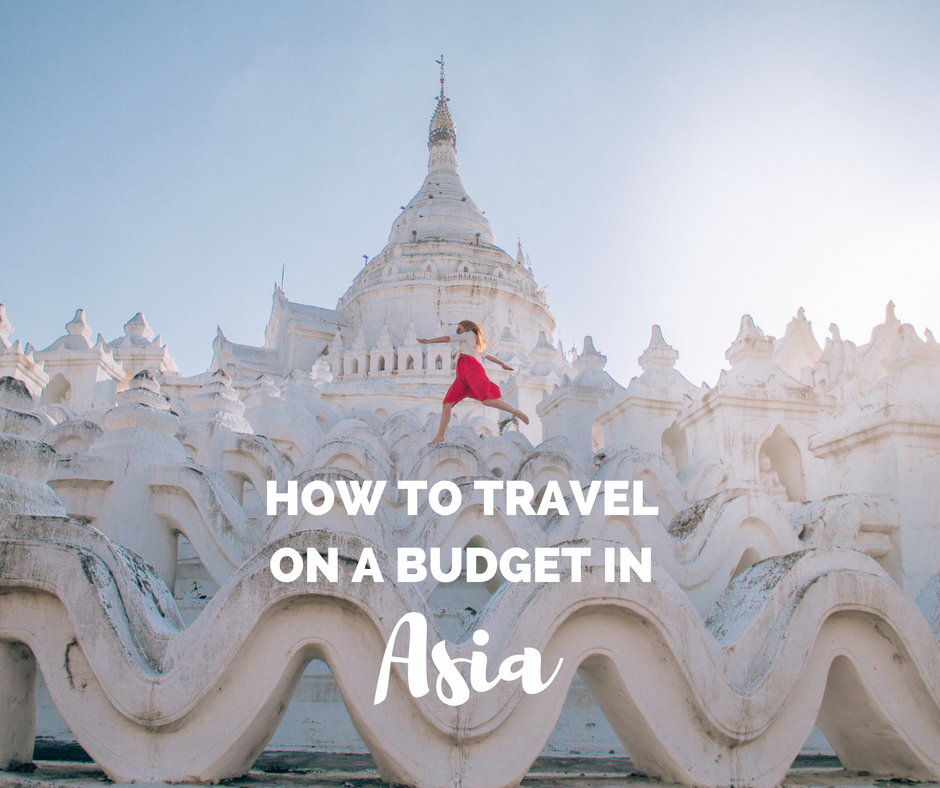





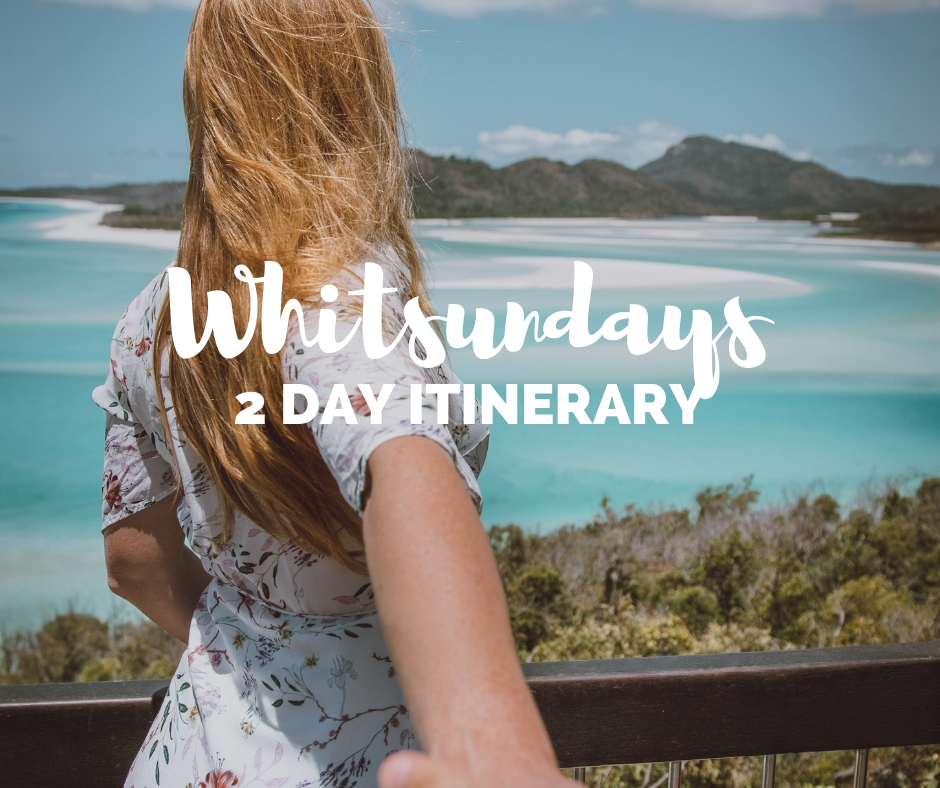
21 Comments
Hannah
August 2, 2018 at 12:18 pmThis is so good and informative Ellie! Been waiting for this blog hehe! Made lots of notes and I’m now very excited for my travels ??
The Ginger Wanderlust
August 5, 2018 at 9:34 amSo happy to help! please let me know if there are any other blogs you would like me to write 🙂
Sreya
August 2, 2018 at 11:11 pmAbsolutely loved this post!! I’m planning on doing the same thing after graduation, so super helpful for me!
The Ginger Wanderlust
August 5, 2018 at 9:35 amYou will have the best time! Happy to help 🙂
Steph Johnson
August 5, 2018 at 12:12 pmReally good read! It’s so helpful especially the images of your budget and actual spend and your itinerary. Will definitely be using this to plan my trip x
Top 10 things to do in Sri Lanka – The Ginger Wanderlust
August 26, 2018 at 7:42 am[…] How to travel on a budget in Asia […]
48 Hours in Kuala Lumpur – The Ginger Wanderlust
August 26, 2018 at 7:44 am[…] How to travel on a budget in Asia […]
Why Myanmar should be on your travel bucketlist – The Ginger Wanderlust
August 26, 2018 at 7:53 am[…] How to travel on a budget in Asia […]
Top 8 Things To Do in Laos – The Ginger Wanderlust
August 26, 2018 at 7:57 am[…] How to travel on a budget in Asia […]
Can I do Angkor Wat in One Day? – The Ginger Wanderlust
August 26, 2018 at 7:58 am[…] How to travel on a budget in Asia […]
Top 15 Things To Do in Vietnam – The Ginger Wanderlust
August 26, 2018 at 8:07 am[…] How to travel on a budget in Asia […]
Top 16 Things To Do in Japan – The Ginger Wanderlust
August 26, 2018 at 8:15 am[…] How to travel on a budget in Asia […]
Top 9 Things to do in Bali – The Ginger Wanderlust
August 26, 2018 at 8:17 am[…] How to travel on a budget in Asia […]
Cambodia’s Paradise Beaches – The Ginger Wanderlust
August 27, 2018 at 5:46 am[…] How to travel on a budget in Asia […]
Childhood Dream Come True – The Gibbon Experience – The Ginger Wanderlust
August 27, 2018 at 5:47 am[…] How to travel on a budget in Asia […]
Top 8 Things To Do in Bangkok – The Ginger Wanderlust
August 27, 2018 at 5:48 am[…] How to travel on a budget in Asia […]
Island hopping around Thailand’s Andaman sea – The Ginger Wanderlust
August 27, 2018 at 5:48 am[…] How to travel on a budget in Asia […]
Top 6 Things To Do in Langkawi, Malaysia – The Ginger Wanderlust
August 27, 2018 at 5:49 am[…] How to travel on a budget in Asia […]
Home – The Ginger Wanderlust
August 27, 2018 at 6:12 am[…] How to travel on a budget in Asia […]
Ultimate Guide to the Philippines – The Ginger Wanderlust
September 18, 2018 at 6:24 am[…] How to travel on a budget in Asia […]
Exploring the Mekong Delta with Buffalo Tours – The Ginger Wanderlust
September 18, 2018 at 6:25 am[…] How to travel on a budget in Asia […]